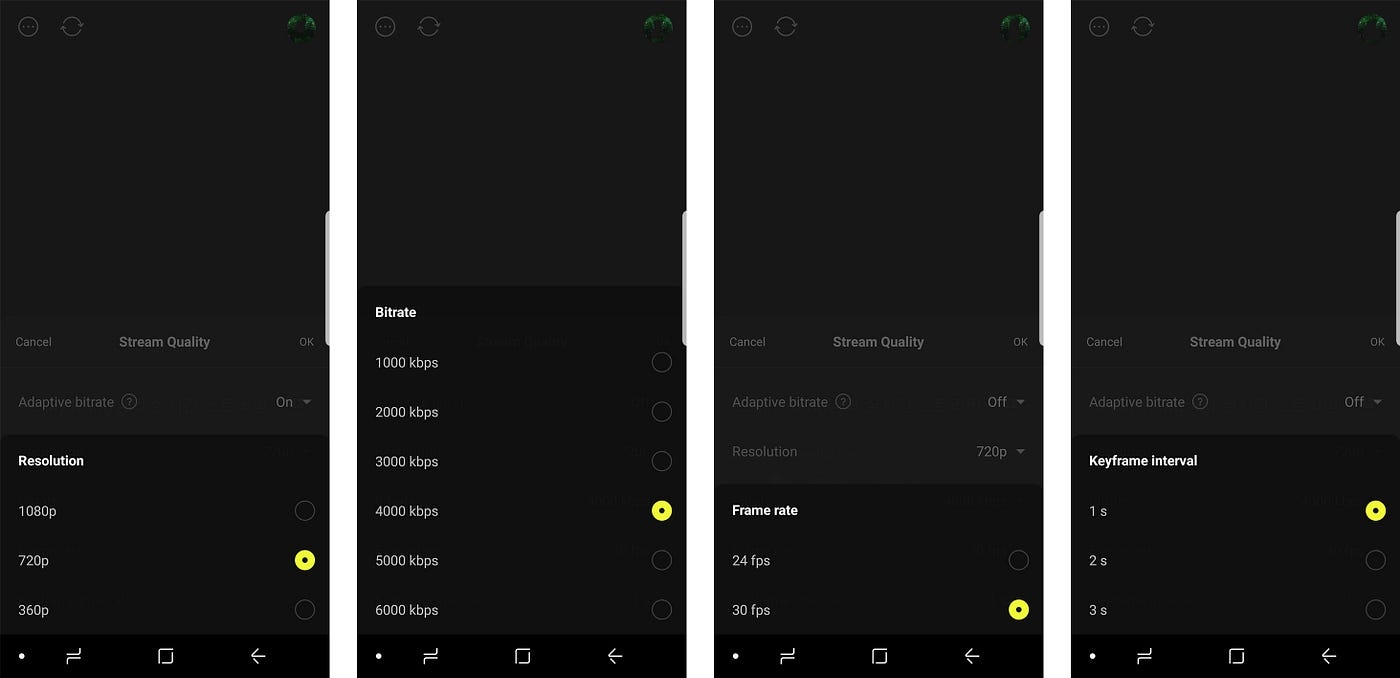Setting Adaptive Bitrate
Android, iOS
ABP (Adaptive Bitrate Publish) is a feature that automatically adjusts video quality based on network conditions. For example, as shown in the image below, the video quality is set to Adaptive by default. This ensures that broadcasts are delivered in the most optimal quality according to the current network conditions.

There are four factors that determine video quality: resolution, bitrate, frame rate, and keyframe interval. You can adjust the details of these options in the settings.
Resolution is the dimension of the video in pixels (width × height). As PRISM supports various resolutions such as 360p, 720p, and 1080p, simply select the resolution of your choice.
Bitrate is a unit that determines how much data should be used per second. Generally, we recommend setting the bitrate to 4000kbps when the resolution is 720p, and 6000kbps when the resolution is 1080p for the highest video streaming quality.
Frame rate refers to the number of frames displayed per second, typically 30fps or 60fps.
Keyframe interval defines how frequently keyframes are inserted in the video stream, typically set to every 2 seconds for optimal streaming performance.
But if you are a rookie streamer, we recommend keeping your ABP on.

You can also adjust the maximum bitrate when adaptive bitrate is enabled. If the network is stable enough to support the set bitrate, the stream will maintain that quality. However, if the network conditions degrade, the video quality will automatically adjust.

Last updated
Was this helpful?

